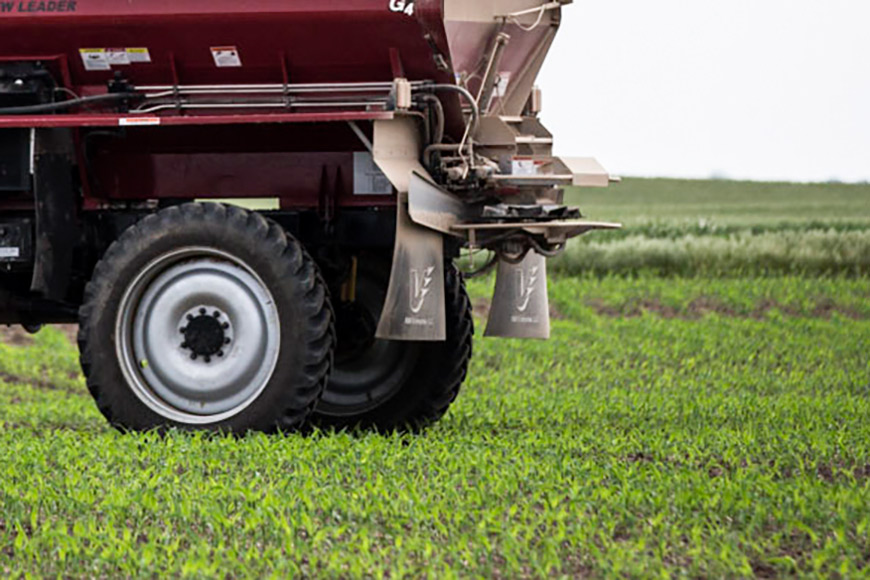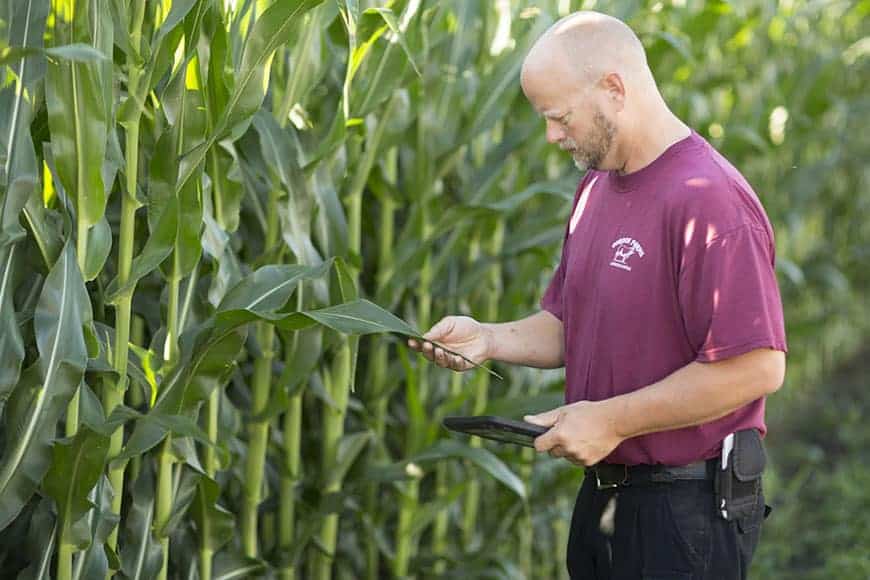3 Tips to Maximize Split-Nitrogen Application Efficiency

Most farmers know that crops benefit from split-fertilizer applications. But logistical challenges may make it difficult for some to switch their fertilization plans from a single- pass to a double-pass program. Here are some tips to help make the switch to a split-nutrient application more manageable.
1. Prioritize fields. If you’re new to split applications, it may not make practical sense to do them on all your fields. For small or irregularly shaped fields, it may be easier from a logistical standpoint to do a single pass of ammonia or UAN/urea that is stabilized. Save split applications for larger, flatter fields that are easier to side-dress or top-dress nitrogen. Using Y-drops with a UAN dribble can widen the window of application if you don’t have access to specialized equipment to get over larger corn.
2. Plan ahead. If you want to split apply your nutrients, you have to be deliberate with your strategy. First, map out what nutrients you plan to apply and in what form. Nutrients that are soluble and negatively charged, including nitrogen, sulfur and boron, are good candidates for split application because they tend to have the most potential to leach from soil. If you plan to split apply nitrogen, the second pass is also a great time to supplement sulfur and boron.
After you’ve established the nutrient plan, figure out whether you have the equipment and labor to cover the acres you’d like. As the amount of ground to cover increases, the window for application becomes tighter. There’s also the unknown of how weather will affect field conditions for the second application.
3. Fine-tune in-season applications. If your goal is to realize the maximum yield of your genetics, you might plan to apply 1/3 of your total nitrogen upfront, followed by the remaining 2/3 during the crop’s grand growth stage. During this time (V6-R2) the plant will take up approximately 60 to 80 percent of its nitrogen and potassium needs. You can use tissue sampling results and the R7® Field Forecasting Tool (FFT) to help nail down how much nitrogen your crop needs in-season. The FFT can offer specific recommendations based on weather conditions, application timing and the nutrient form you plan to apply. The FFT also integrates tissue sampling data to correct the model based on a plant’s current nutrient levels.
There’s data out there to support split-nutrient applications, but you have to make sure it makes logistical sense for your operation. It takes deliberate, upfront planning to get the maximum benefit. For help implementing a fertilization method that fits with your operation’s overall business strategy and yield goals, contact your local WinField United retailer.
1. Prioritize fields. If you’re new to split applications, it may not make practical sense to do them on all your fields. For small or irregularly shaped fields, it may be easier from a logistical standpoint to do a single pass of ammonia or UAN/urea that is stabilized. Save split applications for larger, flatter fields that are easier to side-dress or top-dress nitrogen. Using Y-drops with a UAN dribble can widen the window of application if you don’t have access to specialized equipment to get over larger corn.
2. Plan ahead. If you want to split apply your nutrients, you have to be deliberate with your strategy. First, map out what nutrients you plan to apply and in what form. Nutrients that are soluble and negatively charged, including nitrogen, sulfur and boron, are good candidates for split application because they tend to have the most potential to leach from soil. If you plan to split apply nitrogen, the second pass is also a great time to supplement sulfur and boron.
After you’ve established the nutrient plan, figure out whether you have the equipment and labor to cover the acres you’d like. As the amount of ground to cover increases, the window for application becomes tighter. There’s also the unknown of how weather will affect field conditions for the second application.
3. Fine-tune in-season applications. If your goal is to realize the maximum yield of your genetics, you might plan to apply 1/3 of your total nitrogen upfront, followed by the remaining 2/3 during the crop’s grand growth stage. During this time (V6-R2) the plant will take up approximately 60 to 80 percent of its nitrogen and potassium needs. You can use tissue sampling results and the R7® Field Forecasting Tool (FFT) to help nail down how much nitrogen your crop needs in-season. The FFT can offer specific recommendations based on weather conditions, application timing and the nutrient form you plan to apply. The FFT also integrates tissue sampling data to correct the model based on a plant’s current nutrient levels.
There’s data out there to support split-nutrient applications, but you have to make sure it makes logistical sense for your operation. It takes deliberate, upfront planning to get the maximum benefit. For help implementing a fertilization method that fits with your operation’s overall business strategy and yield goals, contact your local WinField United retailer.




